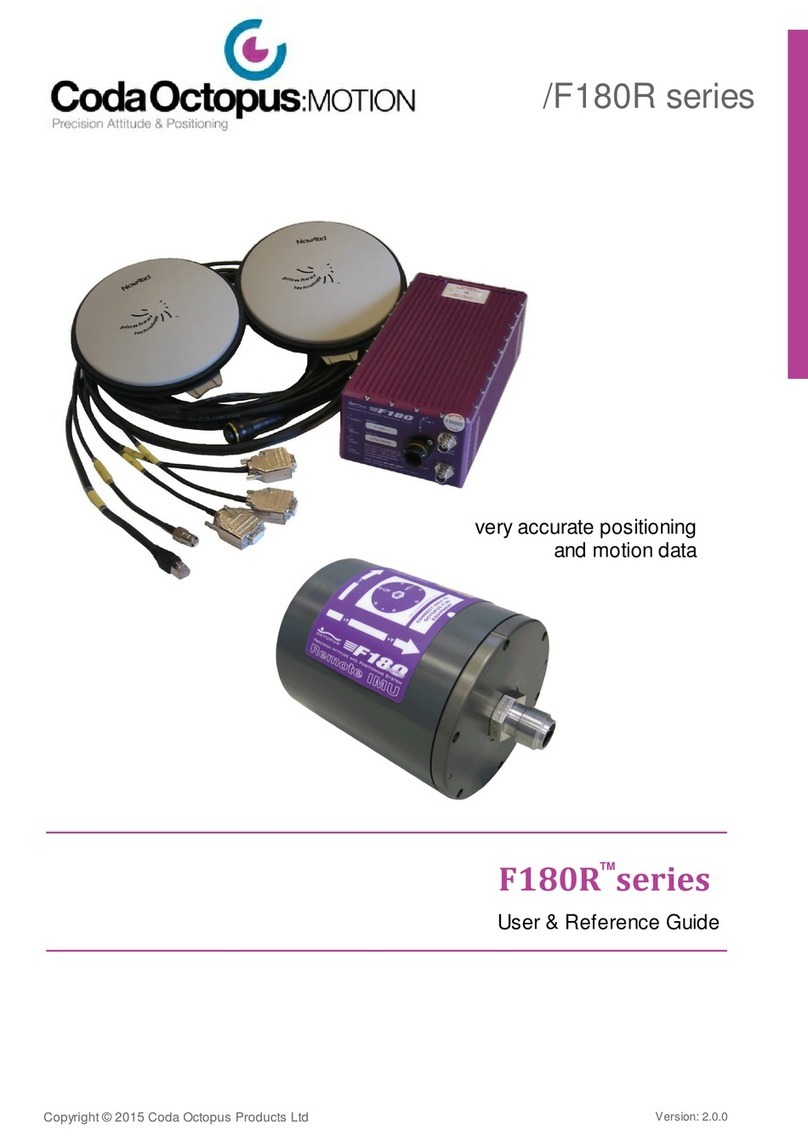
© 2004 CodaOctopus Ltd
1.2.2Antenna Mounting
Antennas should be mounted where they have a clear, unobstructed view of the
There are two CRITICAL issues relating to antenna mounting to which
close attention should be paid:
Antenna baseline (separation between antennas) must be accurately measured
to within 5mm or better. To achieve this, it is recommended that a pre-fabricated bar
with accurate mounting points is used. The user can select baseline lengths anywhere
between 1m – 4m however the general recommendation is to use a baseline of
Optimal system performance during the heading initialisation and calibration
phases can be achieved by using the smallest antenna baseline that delivers
measurements meeting the users specification. Thus optimal heading
initialisation periods and calibration times are achievable with baseline lengths
Care should also be taken to ensure that both antennas are mounted similarly, i.e. with
the connector pointing in approximately the same direction.
Antenna position relative to the IMU is required when configuring the F180. Accurate
knowledge of antenna position relative to the IMU will speed up calibration, helping to
antenna (topmost antenna connector) needs to be
measured as accurately as possible, ideally to within 0.5m or better, however a close
approximation to within 1m is preferable to no measurement.
The three GPS offsets X, Y and Z as shown should be noted ready for use during the
configuration phase where they will be entered in
Step 4 of the Configuration Wizard.
Note: Take care to observe the correct
sign/polarity of each offset measured.
The position of the secondary antenna relative to
the primary antenna and IMU, must be known,
ideally to within 5 degrees.
The typical configuration is for the antenna bar to
be oriented port-starboard with the primary
antenna on the port and the IMU located with the




























